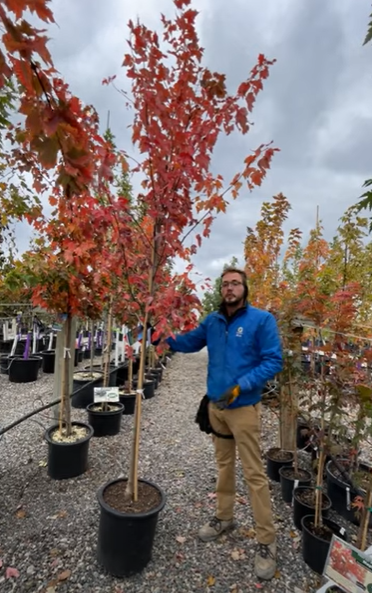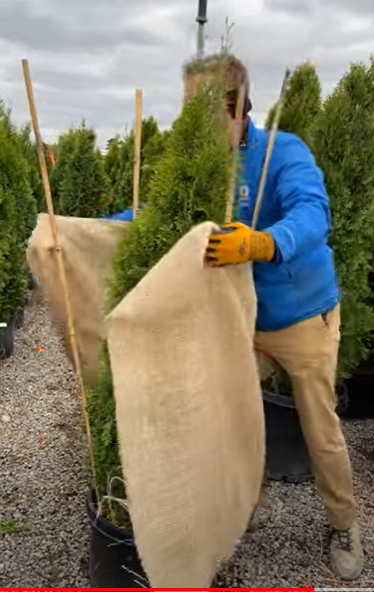Click below to listen to my 2 min. Garden Bite radio show/podcast: Preparing your trees and evergreens for winter
The blend of winter sun, wind, temperature fluctuations, snow and ice can make for a deadly combo for some of our trees and shrubs.

And there’s critter crunching too. Wildlife needing sustenance during winter may gnaw on your nannyberry and other woody plants, especially young plantings under 3 years old. Tree wraps and guards can help substantially with that AND are a pretty decent guarantee against sunscald.
Sunscald happens when the winter sun heats up the south and/or west side of your tree enough to get the cambium layer moving. That’s the only layer of the tree above ground, that’s actually alive and it carries water and nutrients.
When the sun goes down and temps drop quickly, the cambium layer can freeze and die. You’ll see dead bark that looks sunken, cracked or dried.
- Apply light colored tree wraps or guards now on newly planted trees and those with thin bark like cherries, crabapples, plums, maples and honey locust. White plastic is recommended by an expert I know (see video above). White reflects light best.
- Avoid fertilizing at this time of year as you do NOT want succulent growth, which is vulnerable to winter injury.
- DO water your trees up until the ground freezes but don’t flood them. The average date for ground freeze for zone 4 is December 6th, however, with changing weather patterns, rely more on your own County extension office for dependable information. Of course, if the water just runs off, well, it’s probably froze! A moist soil holds more warmth than a dry soil.

Evergreens such as arborvitae, yews and hemlocks can suffer winter burn.
This happens when winter sun and wind trigger transpiration allowing water loss. With the ground frozen, that loss can’t be replaced. Wrap those vulnerable to winter sun and wind, in burlap. In this video from Gertens, Brad shares the two ways to wrap your vulnerable evergreens:
